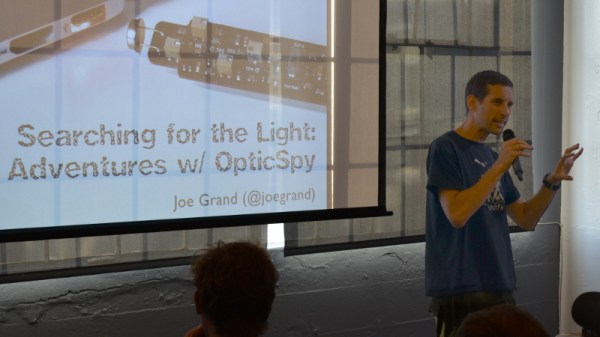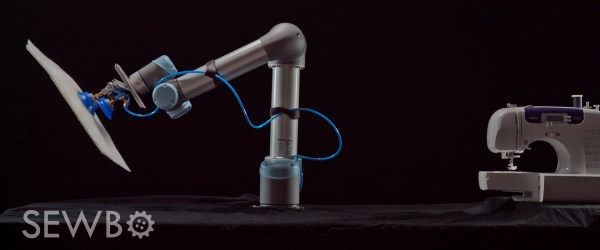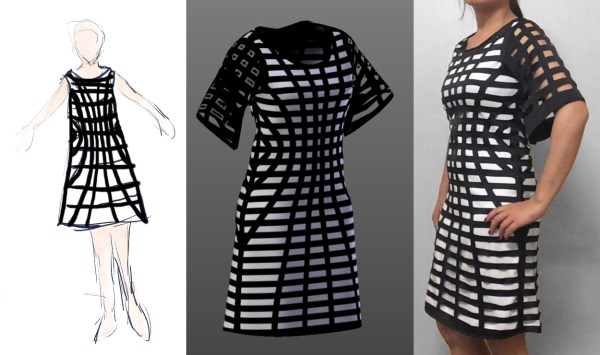Thursday night was a real treat. I got to see both Joe Grand and Kitty Yeung at the HDDG meetup, each speaking about their recent work.
Joe walked us through the OpticSpy, his newest hardware product that had its genesis in some of the earliest days of data leakage. Remember those lights on old modems that would blink when data is being transmitted or received? The easiest way to design this circuit is to tie the status LEDs directly to the RX and TX lines of a serial port, but it turns out that’s broadcasting your data out to anyone with a camera. You can’t see the light blinking so fast with your eyes of course, but with the right gear you most certainly could read out the ones and zeros. Joe built an homage to that time using a BPW21R photodiode.
Transmitting data over light is something that television manufacturers have been doing for decades, too. How do they work in a room full of light sources? They filter for the carrier signal (usually 38 kHz). But what if you’re interested in finding an arbitrary signal? Joe’s bag of tricks does it without the carrier and across a large spectrum. It feels a bit like magic, but even if you know how it works, his explanation of the hardware is worth a watch!
Continue reading “Joe Grand Is Hiding Data In Plain Sight: LEDs That Look Solid But Send A Message”















